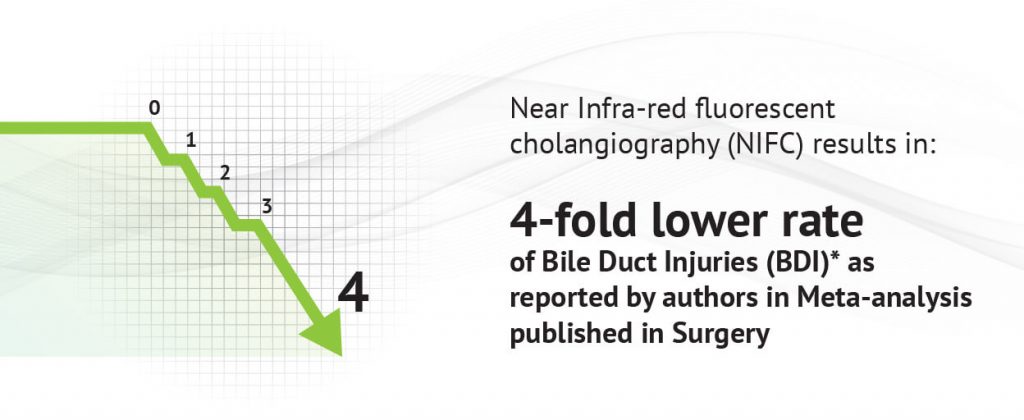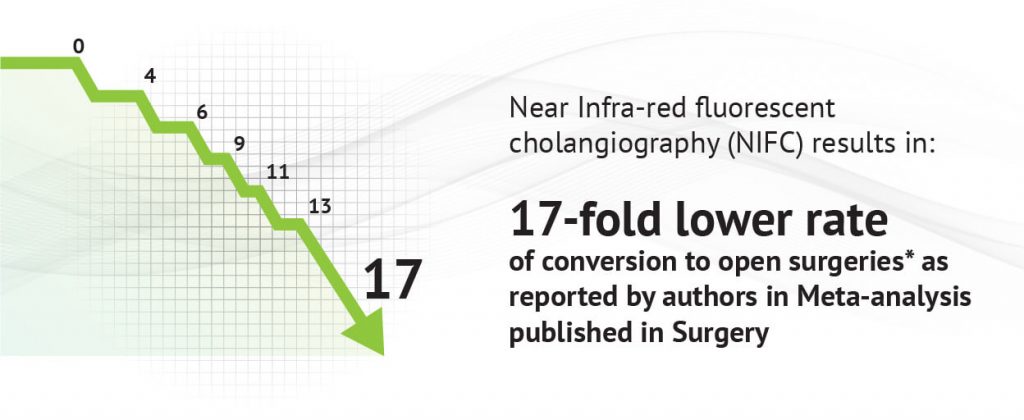Recent publication in Surgery
Does near-infrared fluorescent cholangiography with indocyanine green reduce bile duct injuries and conversions to open surgery during laparoscopic or robotic cholecystectomy? – A meta-analysis
Fernando Dip, Emanuele Lo Menzo, Kevin P White, Raul J Rosenthal
Background
Methods
A thorough PubMed search was conducted to identify randomized clinical trials and nonrandomized clinical trials with ≥100 patients. Because all near-infrared fluorescent cholangiography studies were published since 2013, only studies without near-infrared fluorescent cholangiography published since 2013 were included for comparison. Incidence estimates, weighted and unweighted for study size, were adjusted for acute versus chronic cholecystitis, and for robotic versus laparoscopic cholecystectomy and are reported as events/10,000 patients. All studies were assessed for bias risk and high-risk studies excluded.
Results
In total, 4,990 abstracts were reviewed, identifying 5 near-infrared fluorescent cholangiography studies (3 laparoscopic cholecystectomy/2 robotic cholecystectomy; n = 1,603) and 11 not near-infrared fluorescent cholangiography studies (5 laparoscopic cholecystectomy/4 robotic cholecystectomy/2 both; n = 5,070) for analysis. Overall weighted rates for bile duct injury and conversion were 6 and 16/10,000 in near-infrared fluorescent cholangiography patients versus 25 and 271/10,000 in patients without near-infrared fluorescent cholangiography.


Among patients undergoing laparoscopic cholecystectomy, bile duct injuries, and conversion rates among near-infrared fluorescent cholangiography versus patients without near-infrared fluorescent cholangiography were 0 and 23/10,000 versus 32 and 255/10,000, respectively. Bile duct injury rates were low with robotic cholecystectomy with and without near-infrared fluorescent cholangiography (12 and 8/10,000), but there was a marked reduction in conversions with near-infrared fluorescent cholangiography (12 vs 322/10,000).
Conclusion
Although large comparative trials remain necessary, preliminary analysis suggests that using near-infrared fluorescent cholangiography with indocyanine green intraoperatively sizably decreases bile duct injury and conversion-to-open-surgery rates relative to cholecystectomy under white light alone.
